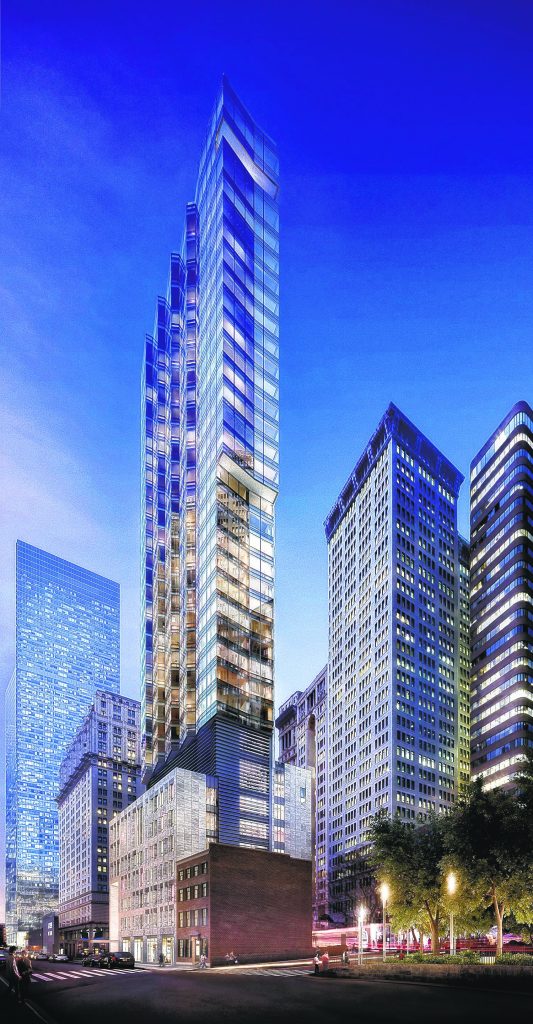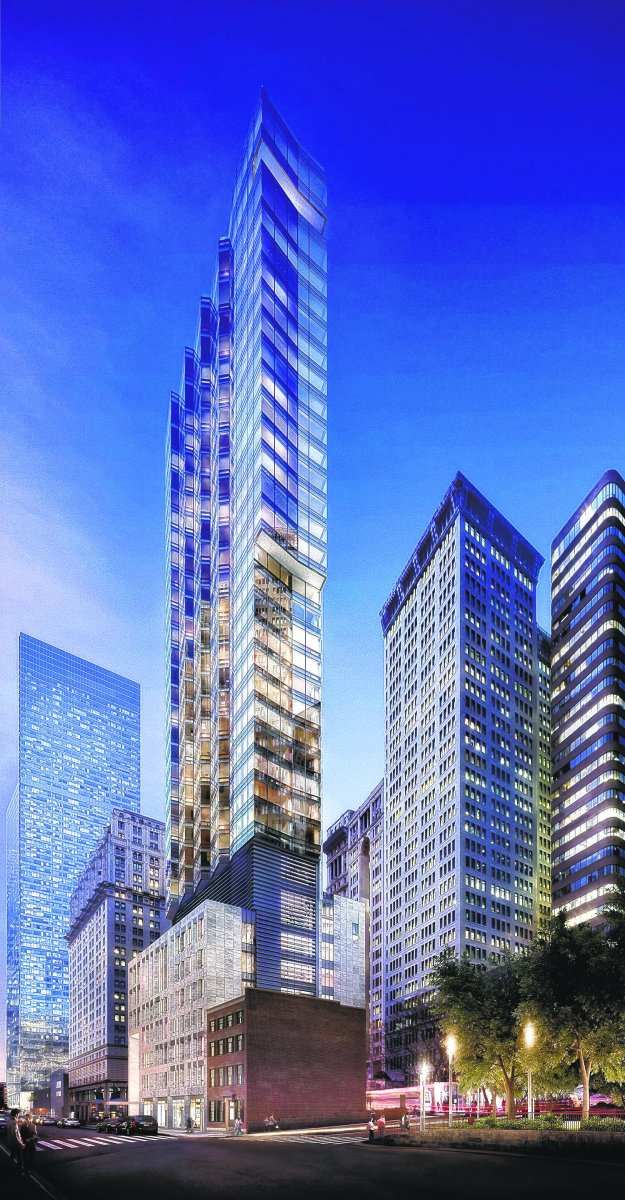
The 500-foot luxury condominium tower Trinity Place Holdings plans to build is increasingly behind schedule, pushing off the opening of the 476-seat elementary school for three more years.
BY COLIN MIXSON
The long-awaited opening of Trinity Place School has been pushed back by two years, leaving Downtown without any new permanent school seats until the fall of 2022.
The delay comes as a crushing blow for local education advocates with the Lower Manhattan School Overcrowding Task Force, who claim the city was already egregiously late in adding much-needed school seats even before the new setback came to light, according to member Eric Greenleaf.
“It’s very bad news,” Greenleaf said. “The existing schools simply don’t have the space to take all the kids for the coming five years. Most are at or near capacity right now and, in the meantime, you’ve got thousands and thousands of apartments planned, or under construction, or recently opened.”
Local civic honcho Patrick Kennell announced the delay at a March 28 meeting of Community Board 1’s Planning Committee, where he said the School Construction Authority is blaming the setback on Trinity Place Holdings — the developer of the 38-story residential tower that will house the new school. The developer now says it won’t be able to produce the so-called “white box” shell structure needed to build out the school until 2019.
The additional 18-months additional of construction required by the SCA to transform the building’s barren core into a learning space will mean the school facility won’t be completed until the middle of 2021 — and then students and staff can’t be moved in for another year after that, Kennell said.
“SCA won’t get the white box it needs to construct the school until 2019 and it takes 18 months to build the school,” Kennell said. “It’s disappointing, obviously, that the school’s not going to open on time.”
The delay, even though due to construction difficulties beyond the SCA’s control, nevertheless accentuates the glacial pace at which the city provides new school seats in Lower Manhattan’s crowded real estate market, where the challenge of finding space to site schools has become increasingly difficult in recent years, Greenleaf said.
City officials announced plans to fit the new school into the bottom floors of the planned complex way back in June of 2013, which itself came three years after locals first began clamoring for more seats Downtown.
“This was first recommended by SCA in June 2013, and it’s going to open nine years later!” Greenleaf railed. “Somebody isn’t planning ahead adequately.”
Because of overcrowding conditions Downtown, the city was forced to find temporary off-site classroom space for kids during construction of the last three schools built in Lower Manhattan — PS 276, Spruce Street School, and Peck Slip School.
And there’s no reason to believe that process, called “incubation,” shouldn’t be used again for kids destined for class at the under-construction Trinity Place, according to CB1 vice chairman Paul Hovitz. “It was always clear that they would need to incubate, because we know we need more kindergarten seats,” Hovitz said.
There’s an obstacle, however, in the form of bright-eyed pre-schoolers, who have taken over classrooms at Downtown’s traditional incubation site, Chamber Street’s Tweed Courthouse, after the rollout of Mayor de Blasio’s signature universal Pre-K program.
Councilwoman Margaret Chin and other Downtown school advocates are optimistic that the city can find alternate places for the little ones at any of a number of other Pre-K centers located Downtown without affecting enrollment. Downtown Express reported last summer that Lower Manhattan has about 250 more Pre-K seats than the neighborhood needs.
“We definitely need school seats down here,” said Chin. “So the Tweed Courthouse, which DOE has historically used for incubating, should still be made available for that.”
The Department of Education, however, has yet to present a strategy for incubating Trinity Place, and locals are hoping the city comes to the April 28 meeting of the School Overcrowding Task Force armed with a presentation outlining when and where it plans to teach future Trinity Place scholars, said Hovitz.
“Now that we know the school is going to be further delayed, and we’re going to need the seats, I think that’s going to be the topic of discussion,” Hovitz said.
Greenleaf pointed out that Tweed can only hold three grades worth of students, and with Trinity Place’s opening now delayed until 2022, that means the city will have to wait until 2019 to start incubating, or else risk running out of space.
And when Trinity Place School does finally open, locals can begin the long and torturous process of wrangling the city into building a yet another new school — which the data already show the neighborhood is going to need, but for which even the most basic plans have yet to begin.
Optimistically, Greenleaf hopes the process could finally get underway sometime this coming decade.
“We may have to wait until 2029 for the next one to open, and by then there will be nowhere left for a school in Lower Manhattan,” he said.


































